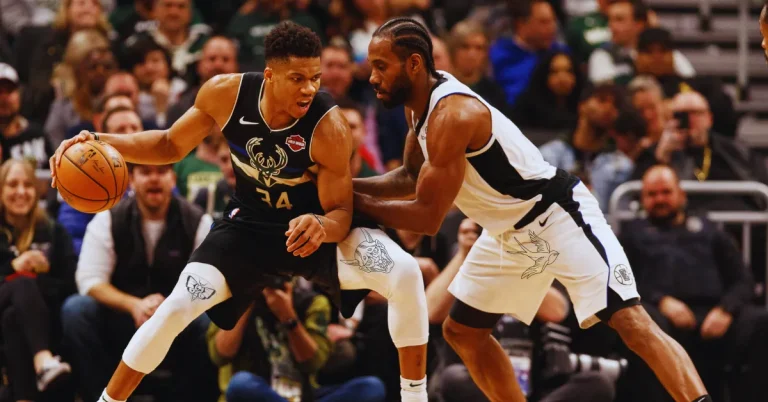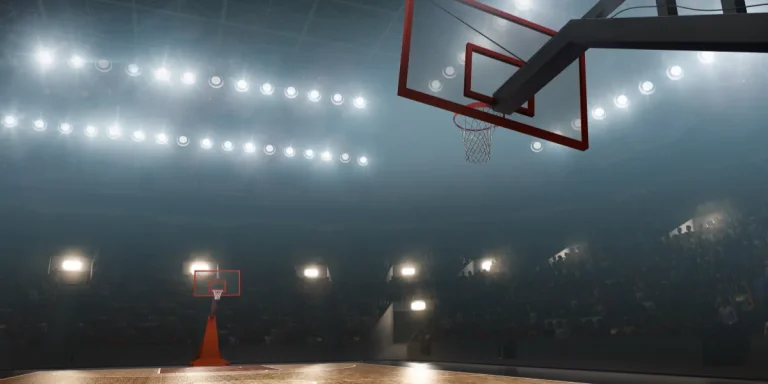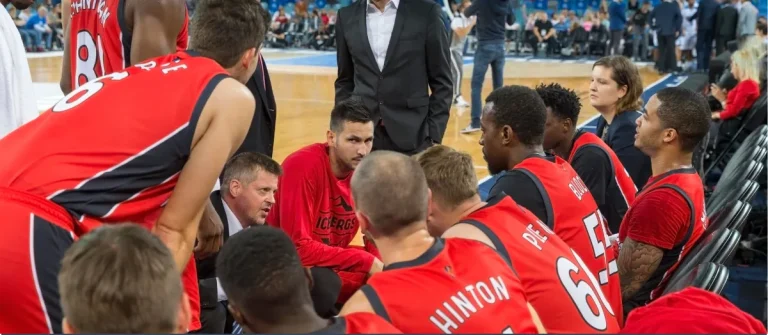How Long Does a Basketball Game Last? Hoops and Time
How Long Does a Basketball Game Last: Why is understanding the duration of a basketball game important? Basketball games are not just mere sporting events; they are captivating and thrilling experiences that bring together athletes, fans, and a sense of community. To truly appreciate and immerse oneself in the world of basketball, it becomes essential to comprehend the duration of a game.
How Long do NBA Games Last Including Breaks?
In basketball, game length is set by governing bodies like the FIBA and the NBA. Such as

National Basketball Association (NBA)
In the NBA (National Basketball Association), games are structured into four quarters, with each quarter lasting 12 minutes. This setup results in a total game duration of 48 minutes. This format allows for ample time for teams to compete and for the game to unfold, offering fans an exciting and engaging experience.
FIBA (International Basketball Federation)
On the international stage, governed by the FIBA (International Basketball Federation), games follow a similar structure with four quarters. However, each quarter in FIBA games lasts 10 minutes, resulting in a total game duration of 40 minutes. This slight difference in quarter length is a notable distinction between NBA and FIBA basketball, reflecting variations in gameplay pacing and strategies between different basketball leagues.
Women Basketball Game (WNBA)
In the WNBA (Women’s National Basketball Association), games consist of four quarters, each lasting 10 minutes, totaling a game duration of 40 minutes. This format allows for fast-paced gameplay, dynamic scoring opportunities, and intense defensive battles, making WNBA games captivating for players and fans.

Similarly, professional women’s basketball leagues and international competitions governed by FIBA also typically follow this standard format of four quarters of 10 minutes each.
College Basketball Game
College basketball governed by the National Collegiate Athletic Association (NCAA), has a unique format different from professional basketball. Instead of playing in four quarters, teams compete in two halves. Each half of college basketball lasts for 20 minutes, totaling a game duration of 40 minutes.
However, there’s a break between the halves, typically around 15 minutes long. This halftime break provides players with an opportunity to rest, strategize, and adjust their game plan before resuming play in the second half.
Junior Level Basketball
These basketball games can vary in duration. At junior and junior-varsity levels, games often have two halves of 20 minutes each, like college basketball. In lower levels and youth leagues, it may be four-quarters of 8 minutes each. There are typically 2-minute breaks between quarters and a 15-minute halftime break.
3 vs. 3 Basketball Game
In 3v3 basketball, games typically consist of a single 10-minute period. The clock stops for injuries and other stoppages. The first team to score 21 points wins, regardless of time. Overtime occurs if there is a tie, lasting until one team scores two points, preceded by a 1-minute break. However, rules may vary in different 3v3 basketball matches.
Read also: Cheers In Basketball Game
Factors Influencing Game Length
Various factors contribute to the length of a basketball game. This section explores key elements that influence the duration of a game and shape the overall experience for players and spectators.
- Pace of play: The style of play employed by teams can significantly impact game duration. A fast-paced, up-tempo style shortens the game, while a deliberate, methodical style extends it.
- Television timeouts: Scheduled breaks for commercials and analysis, television timeouts can disrupt the game’s flow and duration. They are necessary for broadcasting revenue but occasionally disrupt rhythm and momentum.
- Substitutions’ impact: Player substitutions allow teams to rotate players, but frequent substitutions can lead to more stoppages and interruptions, potentially prolonging the game.
By considering these factors, teams, coaches, and league officials can manage game duration and create an optimal balance between competitiveness, entertainment, and scheduling constraints.
Longest Basketball Games in History
The history of basketball has seen its fair share of long and intense games, some stretching well beyond regulation playtime. Here are some of the longest basketball games in history:
NBA: March 6, 1951, Indianapolis Olympians vs. Rochester Royals. This NBA game holds the record for the longest game in history, lasting a total of 78 minutes and six overtimes. The Indianapolis Olympians eventually won with a score of 75-73.
NCAA Men’s Basketball: March 12, 2009, Syracuse vs. Connecticut. In the quarterfinals of the Big East Tournament, Syracuse and Connecticut went into a six-overtime battle that lasted for 3 hours and 46 minutes. Syracuse emerged victorious with a final score of 127–117.
International Basketball: January 25, 1987, Brunei vs. Thailand. This FIBA Asia Championship game between Brunei and Thailand holds the record for the longest international basketball game, lasting for 4 hours and 28 minutes. Thailand won the game 172-142.
High School Basketball: February 29, 1964 – Carver High vs. Pine Bluff. In Arkansas, Carver High and Pine Bluff played an epic seven-overtime game that lasted for 4 hours and 15 minutes. Carver High won with a final score of 74-72.
Women’s College Basketball: February 10, 1993 – Notre Dame vs. Connecticut: This NCAA women’s basketball game went into four overtimes, lasting for 3 hours and 16 minutes. Connecticut emerged victorious with a final score of 106-98.
What is the Duration of the Breaks in a Basketball Game?
In basketball, the intervals between quarters typically last around two to three minutes, depending on the competition and the size of the match. However, during the second quarter, there is usually a longer break of 15 minutes known as “half-time.” This allows the players to rest and recuperate.
How Long is an NBA Game in Minutes?
An NBA game consists of four quarters, each lasting for 12 minutes. Therefore, the total playing time in an NBA game is 48 minutes. However, there are various breaks and timeouts throughout the game, which extend the overall duration. Including these breaks, the average duration of an NBA game typically ranges between two to two-and-a-half hours.
FAQs
How long does a regulation NBA game last?
A standard NBA game lasts for 48 minutes, split into four quarters of 12 minutes each. However, when factoring in timeouts, halftime, and other pauses, the average length of an NBA game can be between two to two and a half hours.
Do timeouts affect the duration of a basketball game?
Timeouts in basketball can make the game longer. When a team calls a timeout, the game stops temporarily. If teams use multiple timeouts, it can add to the total time of the game.
What happens if a basketball game goes into multiple overtime?
If a basketball game is tied when regular time ends, they play extra time called overtime. Each overtime is five minutes long. The team that scores more points during overtime wins that period. They keep playing overtime until one team scores more points and wins the game.
Conclusion
As we have discussed the duration of basketball games, including the standard 48 minutes for regulation NBA games. Timeouts can affect game duration, and there are exceptions in youth, college, and international basketball. College games typically last around two hours. Overtime periods are played if a game is tied, and the length of a game can be manipulated. Basketball games are generally shorter compared to other sports. The fast-paced nature of basketball appeals to fans, and there are notable games known for extended play. Enjoy the excitement of basketball games.

Passionate basketball player striving for excellence on and off the court. Dedicated to the game since youth, I have honed skills through years of practice. Explore my journey, gear reviews, and dunking tips. Let’s elevate our game together!







